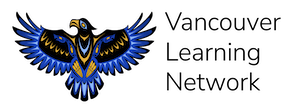Pre-Calculus 11
Pre-Calculus 11 Course Overview
Big Ideas
Algebra allows us to generalize relationships through abstract thinking. | The meanings of, and connections between, operations extend to powers, radicals, and polynomials. | Quadratic relationships are prevalent in the world around us. | Trigonometry involves using proportional reasoning |
From: https://curriculum.gov.bc.ca/curriculum/mathematics/11/pre-calculus
Introduction
This course is designed to provide students with the mathematical understandings and critical-thinking skills identified for entry into post-secondary studies in programs that require the study of theoretical calculus. Typically, a student would be planning to enter a college or university in a mathematics, science, engineering, medicine, or commerce program. The main areas of study include the real number system, powers with rational exponents, radical and rational operations and equations, factoring, quadratic functions and equations, inequalities, trigonometry, and financial literacy. This course gives students the graduation requirement in mathematics.
Where does this course fit?
- Pre-requisite: Requires Foundations of Mathematics and Pre-Calculus 10
- Required to continue with Pre-Calculus 12
- Graduation Status: One of the Grade 11/12 Mathematics options required for graduation
Course Materials
- Course materials provided online
- Scientific calculator required
- Some graphing paper needed
- Graphing calculator is not allowed nor required on exams
Brief Outline
Unit | Description |
Factoring Polynomials | Students will learn how to factor GCF, trinomials of the form ax2+bx+c, difference of squares and harder factoring cases like a(f(x))2+b(f(x))+c. |
Quadratic Functions | Students will learn how to identify characteristics of graphs (including domain, range, intercepts, vertex, symmetry) given multiple forms, to transform quadratic functions, and to solve word problems related to quadratic functions. |
Quadratic Equations | Students will learn how to solve equations using various methods: graphing, factoring, quadratic formula, completing the square and to see the relationship between quadratic functions versus quadratic equations. Students will also learn how to solve and to graph linear and quadratic inequalities on number lines. |
Rationals | Students will learn how to simplify and apply operations to rational expressions, to identify non-permissible values, and to solve rational equations while identifying any extraneous roots. |
Radicals | Students will learn how to classify real number system, to simplify radicals, to order a set of irrational numbers, to perform operations with radicals, and to solve simple (one radical only) equations algebraically. |
Trigonometry | Students will learn how to use sine and cosine laws to solve contextual and non-contextual problems. Students will learn how to determine the angles in standard position, unit circle, reference angle, co-terminal angle, trigonometric ratios and to solve simple trigonometric equations. |
Financial Literacy | Students will learn about the compound interest and will be introduced to the idea of investments and loans with regular payments. |
Assessment Percentage Breakdown
Assessment Type | Percentage of the Course |
Assignments | 15.5% |
Quizzes | 17.5% |
Midterm exam | 27% |
Final exam | 40% |
You have up to a year to complete your course.

